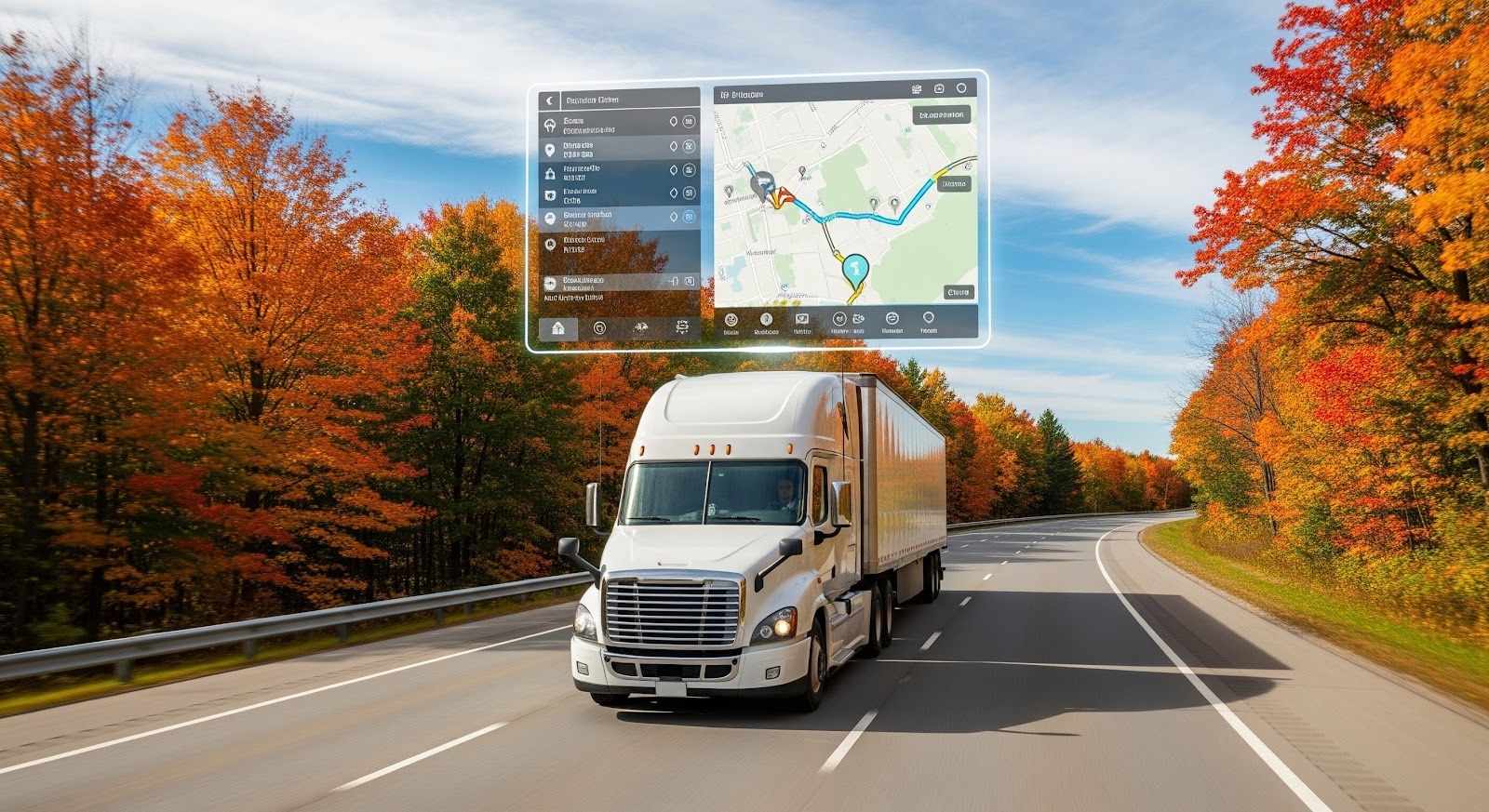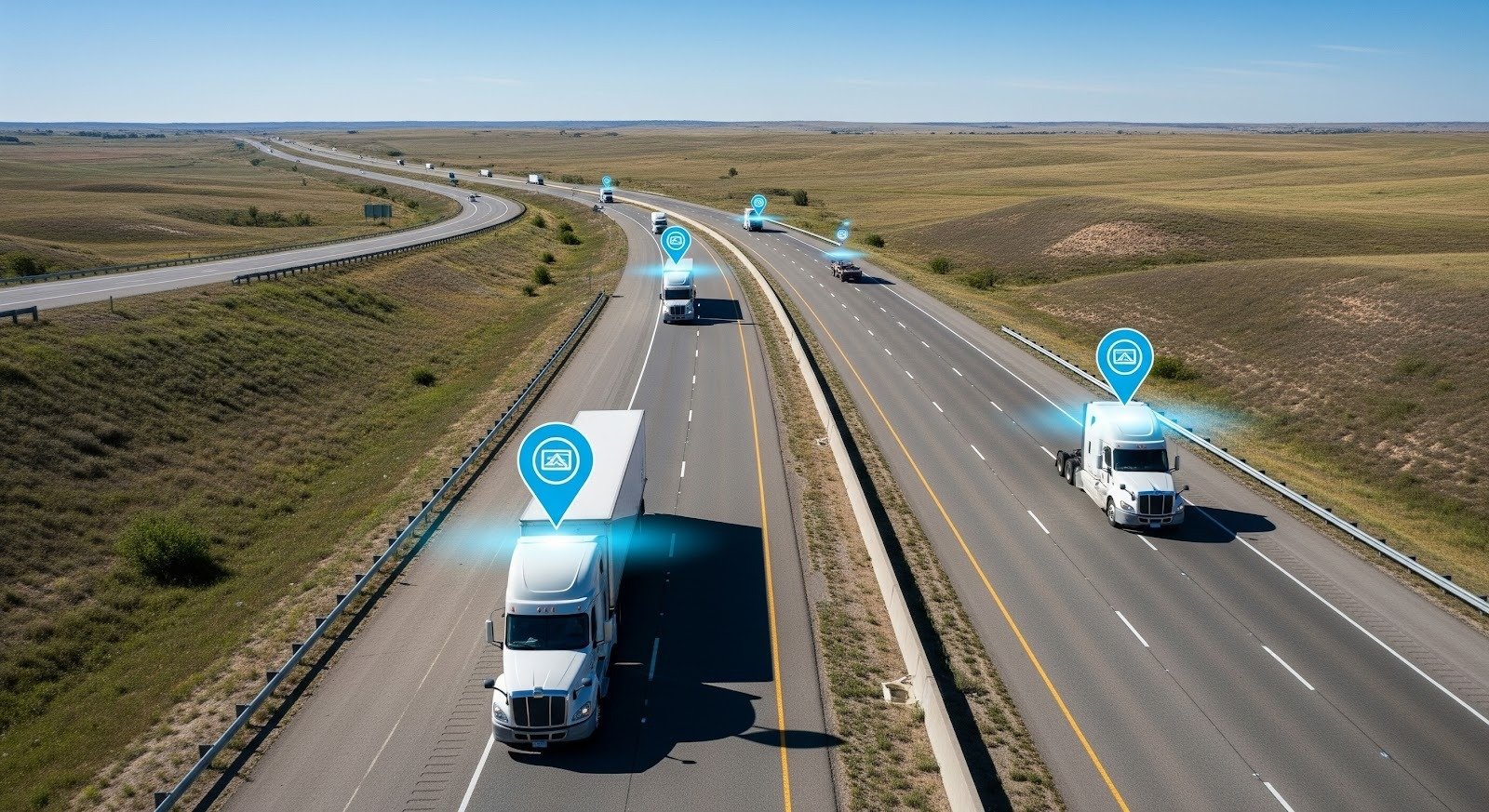Dashcam for Trucks: Boost Safety, Visibility & Control
Trucking has always come with its fair share of challenges, from road safety and liability issues to managing fleet efficiency. As the industry...
Keep an eye on the road
Simplify your driver's routine
For efficient decision making
Ensure the compliance of your fleet
Simplify the daily life of your drivers
Maximize the value of your data
Unparalleled monitoring of your assets
The friendly competition that pays off
Planning powered by data
Exceed your customers' expectations
Provide better service to your users
Maximize the satisfaction of your citizens
Simplify your daily life on the construction site
Facilitate the electrification of your fleet
Our experts meet your needs
Easily meet the standards
Improve the safety of your drivers
Protect your data and your fleet
6 min read
![]() Anthony Mainville
May 1, 2025 2:10:04 PM
Anthony Mainville
May 1, 2025 2:10:04 PM
.jpg)
ACT Expo 2025 took place in a distinctive context: on one hand, record growth with over 12,000 attendees and 500 exhibitors; on the other, a rapidly evolving regulatory landscape. It was against this backdrop that Jennifer Rumsey, Chair and CEO of Cummins, addressed the opening session.
"We're in a very different place than we were just a year ago," she emphasized, referencing recent political shifts. "We always knew the energy transition was going to be dynamic. And it's clear now it's going to be even more dynamic, more uncertain, more divergent than we ever thought it would be."
In the face of this uncertainty, Rumsey presented a vision structured around three fundamental pillars to maintain decarbonization momentum while accounting for the economic and operational realities of commercial fleets.
.jpg?width=4833&height=2782&name=20250428_04623%20(1).jpg)
The political winds have shifted dramatically since ACT Expo 2024. Rumsey didn't shy away from acknowledging the new reality: "There's proposals to reconsider re-evaluate EPA regulations. The natural uncertainty is this process takes shape. The incentives for battery electric vehicles offered through the Inflation Reduction Act, used to drive adoption, are back on the negotiating table. And tariffs are being used as trade policies and also impacting our businesses."
But rather than retreat, Rumsey's message reinforced what Erik Neandross had established on opening day—that the industry has moved "past the point of no return." The evidence was all around us: 500+ exhibitors (a 40% year-over-year increase), massive investment announcements, and real-world deployment stories that couldn't be ignored.
"Despite this," Rumsey noted with quiet conviction, "we've proven resilient in our essential role in U.S. commerce and kept our promise to responsibly deliver and transport millions of goods every day. I believe this is the time for us to come together to move the industry forward."
Her words resonated deeply with me and the Quebec industry colleagues in attendance. As providers of telematics solutions that have helped hundreds of Quebec-based fleets, including Nationex and First Student, successfully navigate their electrification journeys, we've long advocated this pragmatic approach to policymakers and industry leaders. The data-driven vision I've championed through AttriX has consistently demonstrated how technological diversity can turn policy uncertainty into operational advantage.
What made Rumsey's address particularly valuable for Canadian fleet operators and policymakers was her articulation of three essential pillars for continued progress—a framework that aligns perfectly with Quebec's collaborative approach to transportation decarbonization.

"We need to set clear and challenging, but also achievable goals that drive innovation and allow the best technologies to compete," Rumsey emphasized, her engineering background evident in her precise articulation. "Regulations that force the adoption of certain technologies may exclude some of the best solutions and they may also overlook meaningful improvements in today's technologies."
This philosophy resonates deeply with Quebec's transportation ecosystem, where AttriX has partnered with entities like Propulsion Québec to support diverse fleet technologies. Groupe Robert exemplifies this approach perfectly—implementing a multi-energy strategy that optimizes each technology for specific operational contexts. They're deploying electric yard tractors for terminal operations, electric trucks for hub-to-hub transport, and renewable natural gas (RNG) and compressed natural gas (CNG) for regional and long-haul applications. Simultaneously, they're improving their traditional diesel fleet efficiency through AttriX's eco-driving training programs, AI-driven routing optimization, and advanced onboard telematics—proving that the path to sustainability embraces technological diversity rather than mandating a single solution.
"We don't want to let perfect be the enemy of good," Rumsey continued, echoing a sentiment familiar to those who've pioneered Quebec's pragmatic approach to transportation innovation. "Many power solutions and alternate fuel sources will be in the midst for a long time, including advanced diesel, biodiesel, renewable diesel, natural gas and hydrogen engines, as well as battery-electric fuel cell and hybrid solutions, because no single solution will meet our broader goals."
The second pillar of Rumsey's framework spoke directly to an approach Canadian policymakers have increasingly embraced: comprehensive lifecycle analysis of transportation energy sources.
"We must consider a fuel or power source's life cycle emissions when making decisions about emissions reduction and nationwide standards," she stated firmly. "In other words, we shouldn't just think about tailpipe emissions. We need to consider a complete life cycle, including fuel production, transportation, and distribution."
This approach should prompt Quebec and Federal policymakers to reconsider how they account for emissions—moving beyond narrow tailpipe measurements to embrace full lifecycle analysis. Such a shift would not only acknowledge Quebec's abundant hydroelectric advantages for battery-electric vehicles but would also properly value the significant environmental contributions of renewable natural gas (RNG). Quebec-based energy innovators like Energir, EBI, and with extensive distribution partners including Harnois are creating jobs while developing RNG infrastructure that delivers a dual environmental benefit: reducing transportation emissions while simultaneously capturing methane from waste that would otherwise contribute to climate change. Without lifecycle accounting, these synergistic environmental gains remain undervalued in policy frameworks, potentially limiting a powerful pathway to decarbonization.
Beyond tailpipe emissions, this lifecycle analysis reveals critical insights for diverse operational scenarios. RNG, for instance, emerges not just as a proven solution for vocational, construction, and waste removal fleets, but also as a viable option for long-distance hauling—applications where battery-electric technology currently faces range limitations and hydrogen lacks sufficient infrastructure. By contrast, compressed natural gas RNG benefit from established infrastructure networks across both the U.S. and Canada, supported by proven technologies like Cummins' X15N engine—a platform already familiar to fleets accustomed to its traditional diesel counterpart.
Rumsey highlighted PepsiCo's exemplary approach: "They're actively evaluating carbon intensity of every energy source, piloting a range of solutions including battery-electric, biofuel, and natural gas solutions, and partnering with key retailers to increase fuel and power availability."
This multi-energy mentality mirrors AttriX's work with Quebec fleets, where our telematics solutions capture vehicle performance data across diverse fuel types—from electric to renewable natural gas—enabling real-world comparisons that inform both operations and policy.
Rumsey's third pillar emphasized pragmatic incrementalism—continuing to improve both conventional and emerging technologies rather than waiting for perfect solutions.
"We need to continue making innovative improvements in our technology offerings that both reduce greenhouse gas and improve fuel efficiency," she explained, "allowing our customers to find the most efficient, cost-effective solutions for their business and application needs."
This philosophy was evident in Cummins' announcement of their new X-15 engine, which will improve fuel economy by 4% over their 2024 products while significantly reducing emissions. It's the same approach that has allowed AttriX, through partnership with Geotab, to help Quebec fleets achieve substantial efficiency improvements regardless of propulsion type. While Nationex has pursued an all-electric strategy for their corridor project, Groupe Robert—the first fleet in North America to deploy the Cummins X15N natural gas engine—demonstrates how technological diversity drives progress. Their commitment to expand X15N adoption while simultaneously optimizing their diesel and electric operations exemplifies how data-driven fleet management can advance environmental goals through multiple pathways.

What became clear throughout Rumsey's address was that data—and the intelligence derived from it—will be the essential navigational tool for fleets managing through this complex transition.
"It also delivers further powerful efficiency gains through powerful optimization, leading connectivity and data capabilities that enables fleet managers to gain full visibility into vehicle health, fuel usage and maintenance needs, and make data-driven decisions that lower costs," Rumsey noted.
This emphasis on data validation aligns perfectly with AttriX's experience in Quebec, where our advance telematics and fleet BI platforms have been instrumental in the Nationex electric corridor project. By collecting and anonymizing performance data via public dashboards, we've helped demystify electric vehicle range, costs, and reliability for fleets across the province.

For those of us supporting Quebec's transportation leadership, Rumsey's emphasis on multiple pathways validated what we've already witnessed: success comes from matching the right technology to the right application, powered by intelligent data systems.
As Rumsey concluded, she returned to the human element that drives this complex transition: "My hope is that we can be unquestionably certain about one thing, our shared commitment to continue powering a more prosperous world, to moving forward together because no one can do it alone."
This commitment to collaboration echoes Quebec's consortium approach to transportation innovation, where AttriX works alongside partners like Propulsion Québec, CargoM, the Quebec Trucking Association (ACQ) and forward-thinking fleet operators to create practical, scalable solutions. Leading carriers like Groupe Robert, Transport Bourassa, Transport Simard, GLS, Nationex, and numerous others are demonstrating how this collaborative ecosystem accelerates innovation while sharing both risks and rewards.
The message from ACT Expo 2025 is clear: Despite regulatory uncertainty, the transportation industry remains unshakably committed to decarbonization—not because of mandates, but because the business case, customer demands, and technological momentum have created unstoppable forward progress.
As we continue supporting Quebec fleets in this journey, AttriX remains committed to providing the data intelligence that turns policy aims into operational reality—proving that with the right approach, sustainability and profitability can advance together, regardless of political headwinds.
About the Speaker: Jennifer Rumsey serves as Chair and Chief Executive Officer of Cummins Inc., a global power technology leader. A mechanical engineer educated at Purdue and MIT, Rumsey oversees strategic direction and global operations for the 105-year-old Indiana-based company with more than 75,000 employees worldwide. With 25 years at Cummins—including roles as Chief Technical Officer before moving to executive leadership—Rumsey brings unique engineering insight to the company's diverse power solutions portfolio spanning advanced diesel, natural gas, electric, hybrid powertrains, batteries, fuel cells, and hydrogen production technologies.
Written by Anthony Mainville | CEO AttriX Technologies Inc.

Trucking has always come with its fair share of challenges, from road safety and liability issues to managing fleet efficiency. As the industry...

Running a fleet of commercial trucks in Canada comes with its share of challenges - tight delivery windows, long distances, driver safety, and...

Geofencing is quickly becoming a go-to tool for modern fleet managers who want better control, efficiency, and visibility over their operations. By...